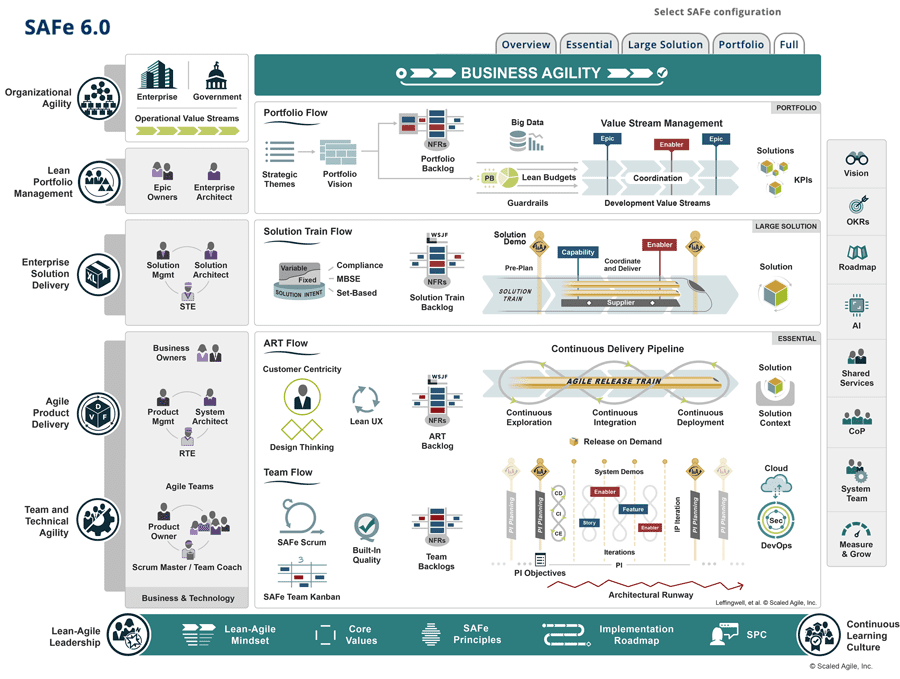The Main Objective of SAFe
The Main Objective of SAFe
The Scaled Agile Framework (SAFe) is an enterprise framework that enables organizations to implement agility on a large scale. It provides a set of values, principles, and practices that help companies deliver high-quality products and services more quickly, efficiently, and cost-effectively.
The primary objective of SAFe is to develop and deliver high-quality products and services that meet customer needs. To achieve this, SAFe aims to:
- Align the goals and priorities of the business, teams, and individuals
- Foster collaboration and communication among different stakeholders
- Improve visibility and transparency of development processes
- Reduce risks and costs
Alignment of Goals and Priorities
In an agile environment, it is essential that the goals and priorities of the business, teams, and individuals are aligned. This ensures that everyone is working in the same direction and resources are used effectively.
SAFe addresses this by encouraging organizations to create a Lean Portfolio Management (LPM). LPM is a process that allows organizations to define and manage their product and service portfolio. It includes elements such as product strategy definition, initiative prioritization, and performance measurement.
Collaboration and Communication
In an agile environment, collaboration and communication are key to success. Teams must be able to work together effectively while sharing information and knowledge.
SAFe addresses this by encouraging organizations to create cross-disciplinary teams. These teams are composed of members from different disciplines, such as development, testing, marketing, and operations. This allows teams to have all the necessary skills to deliver high-quality products and services.
Visibility and Transparency
In an agile environment, it is important that development processes are visible and transparent. This allows teams to monitor their progress and identify potential problems.
SAFe addresses this by encouraging organizations to use visualization tools and techniques. These tools and techniques allow teams to visualize their work and share information clearly and concisely.
Risk and Cost Reduction
In an agile environment, it is important to reduce risks and costs. This enables organizations to deliver products and services more cost-effectively.
SAFe addresses this by encouraging organizations to use practices such as retrospectives and iterative and incremental development. Retrospectives enable teams to learn from their mistakes and improve. Iterative and incremental development allows teams to deliver products and services progressively, reducing the risk of failure.
Conclusion
SAFe is a powerful framework that can help organizations implement agility on a large scale. By aligning goals and priorities, fostering collaboration and communication, improving the visibility and transparency of development processes, and reducing risks and costs, SAFe enables organizations to develop and deliver high-quality products and services more quickly, efficiently, and cost-effectively.
Examples of SAFe Benefits
Organizations that have implemented SAFe have experienced numerous benefits, including:
- Increased customer satisfaction
- Reduced time to market
- Improved quality of products and services
- Increased team productivity
- Reduced costs
SAFe is a framework that can bring significant benefits to organizations looking to implement large-scale agility. It is important to note that SAFe is not a one-size-fits-all solution. It requires a commitment from the entire organization to be effective.
